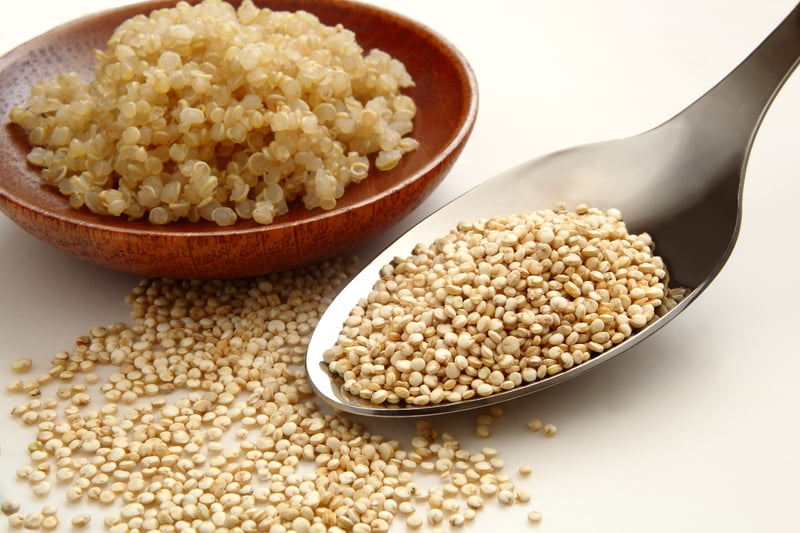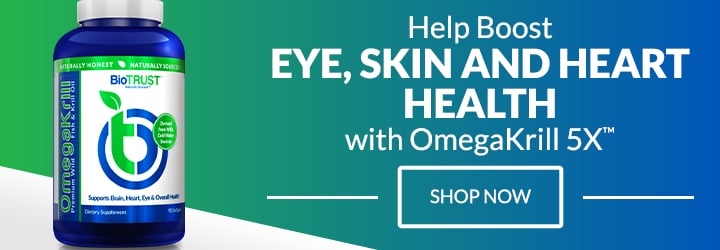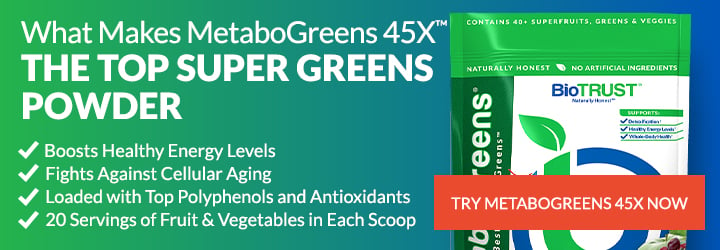Is Quinoa Good For You (or just a nutrition craze)?

Quinoa (pronounced KEEN-wa) has been growing in popularity as a health food for the last couple of decades, as it is highly regarded in many circles as a high-protein, grain-like, gluten-free superfood. You may have even found yourself replacing other popular grains (such as brown rice) with quinoa to give your meal a big boost of nutrition. But is quinoa really all that special? Is quinoa good for you? What are the benefits? On the other hand, are there any cons to consuming it regularly?
What is Quinoa: A History
Quinoa is now a popular staple in the U.S. as well as Europe. Yet, it began as a little known relative of spinach and beets that was first grown over 7,000 years ago on the high, flat plains in the South American Andes (in Bolivia, Peru, and Ecuador). Quinoa is particularly well-suited to this severe climate as it’s highly tolerant to the drought, salinity, wind, hail, and frost, which would threaten many other plants.
It has been called “chisaya mama,” or the “mother of all grains,” and was believed to boost stamina for Incan warriors. It’s not, however, a cereal grain (like oats, wheat, or barley) and is instead a “pseudo-grain,” or a “pseudocereal,” as it’s actually a starchy seed from a tall, leafy grass. With that said, it is considered a whole, unrefined “grain” as it’s eaten like a grain, and the seed remains intact, rather than being stripped of its nutrient-rich bran and germ.
Quinoa has become immensely popular because, in large part, it’s just so dang nutrient dense. This high-protein plant contains all of the essential amino acids, and it is also a good source of several micronutrients, such as manganese, copper, phosphorus, magnesium, folate, and zinc. With 222 calories and 8 grams of protein per cup, it’s one of the most protein-rich plants available. Plus, for those who are gluten-intolerant, it’s gluten-free.
It’s also quite high in both soluble and insoluble fiber with one cup providing five grams of total fiber, which is higher than most other grains. 1 Quinoa also provides other nutrients like the minerals magnesium (118 mg or 25% of the daily recommended amount), manganese (2.3 mg or more than 50% of the RDA), copper (40% of the RDA) and zinc (18% of the RDA).
Because it’s a seed, it also provides 4 grams of healthy fats, including 180 mg of omega-3s, in the form of alpha linolenic acid (ALA). In addition, it’s rich in nearly all the B vitamins, including folate (with 19% of the RDA per one-cup serving) . Yet it’s lower in phytic acid than many foods, so it’s less likely to prevent the body from absorbing the nutrients it provides. Quinoa also provides other beneficial nutrients like the flavonoids quercetin and kaempferol and other polyphenols. 2
To put it simply, quinoa packs a powerful nutritional punch. The year 2013 was declared the “International Year of Quinoa” by the FAO (Food and Agriculture Organization of the United Nations). They even created a quinoa Facebook fan page due to its potential for helping alleviate hunger and malnutrition worldwide as it is available in numerous varieties that can be cultivated in many different climates. 3
Benefits of Quinoa
When the question of “Is quinoa Good For You” is posed, the vast majority of studies on quinoa focus on agriculture rather than nutritional science. However, there are a few studies that indicate it may:
- Lead to less food intake to support healthy weight due to its high-fiber and high-protein content, as well as its concentration of unusual phytonutrients called phytoecdysteroids, which may have weight management and carbohydrate metabolism benefits.5,6,7
- Improve health due to its high concentration of phytosterols 8 and polysaccharides 9 as well as lunasin, a plant-derived peptide that may offer unique health benefits. 10
- Support heart health by lowering cholesterol, specifically the “bad” LDL cholesterol, while increasing levels of the “master antioxidant” and detoxification factor glutathione. 11,12
- Support bone health, as it provides high amounts of nutrients important to bone health, such as magnesium and phosphorus. 6
- Help support healthy carbohydrate metabolism due to its high protein and fiber content, its low glycemic index, and its concentration of the phytoecdysteroid 20-hydroxyecdysone. 13
- Support healthy inflammation due to its high antioxidant content, 14 including chlorogenic acid, ferulic acid, hesperidin, isoquercetin, quercetin, kaempferol, and more. 15, 16
Downsides of Quinoa
Quinoa appears to be a safe, healthy food for most people. Of course, a very small number of people may be allergic to this food, and they should avoid it completely.
Others may find that it’s difficult to digest, especially if it hasn’t been rinsed well, as the outsides of the seeds can be coated with high amounts of saponins. It’s also high in oxalates, which can cause issues for some people. To avoid any digestive issues, it’s recommended that it be washed thoroughly or even soaked overnight. Quinoa can also be sprouted to make the nutrients more bioavailable. If that doesn’t help, then quinoa might not be right for you.
Quinoa is rich in all of the macronutrients—protein, carbohydrates (including fiber), and high-quality fats—as well as phytonutrients. So, it’s clear that quinoa is good (or better said, a nutritious option) for the vast majority of us. There are complicated and nuanced issues for the farmers who grow the crop, however. It has been a boon to many South American communities as it’s become a global commodity.
However, because it’s hard for farmers to keep up with the demand, many of those who grow quinoa can no longer afford to eat their own crop, so they sell it and then eat less nutritious foods themselves. In other areas, corporations have been sweeping in and squeezing out the smaller farmers. In addition, they’re also switching fields to growing a single crop (monocropping). The short-term gain leads to long-term pain, as monocropping can quickly deplete the soil of nutrients, which reduces future yields and negatively affects the environment.
Whenever possible, look at who’s growing your food and how it’s being grown to support the farmers and the land. One way is to seek out fair-trade brands that work directly with quinoa growers (such as Alter Eco and Andean Naturals). Quinoa is also now grown in other parts of the world, including the San Luis Valley of Colorado, as well as several European countries. 17
Is Quinoa Good For You?
Regardless of where your quinoa is grown, it’s a great way to diversify your plate, as quinoa can be used to make a wide variety of dishes that can be enjoyed at breakfast, lunch, and dinner, so it’s easy to include in just about any diet.







